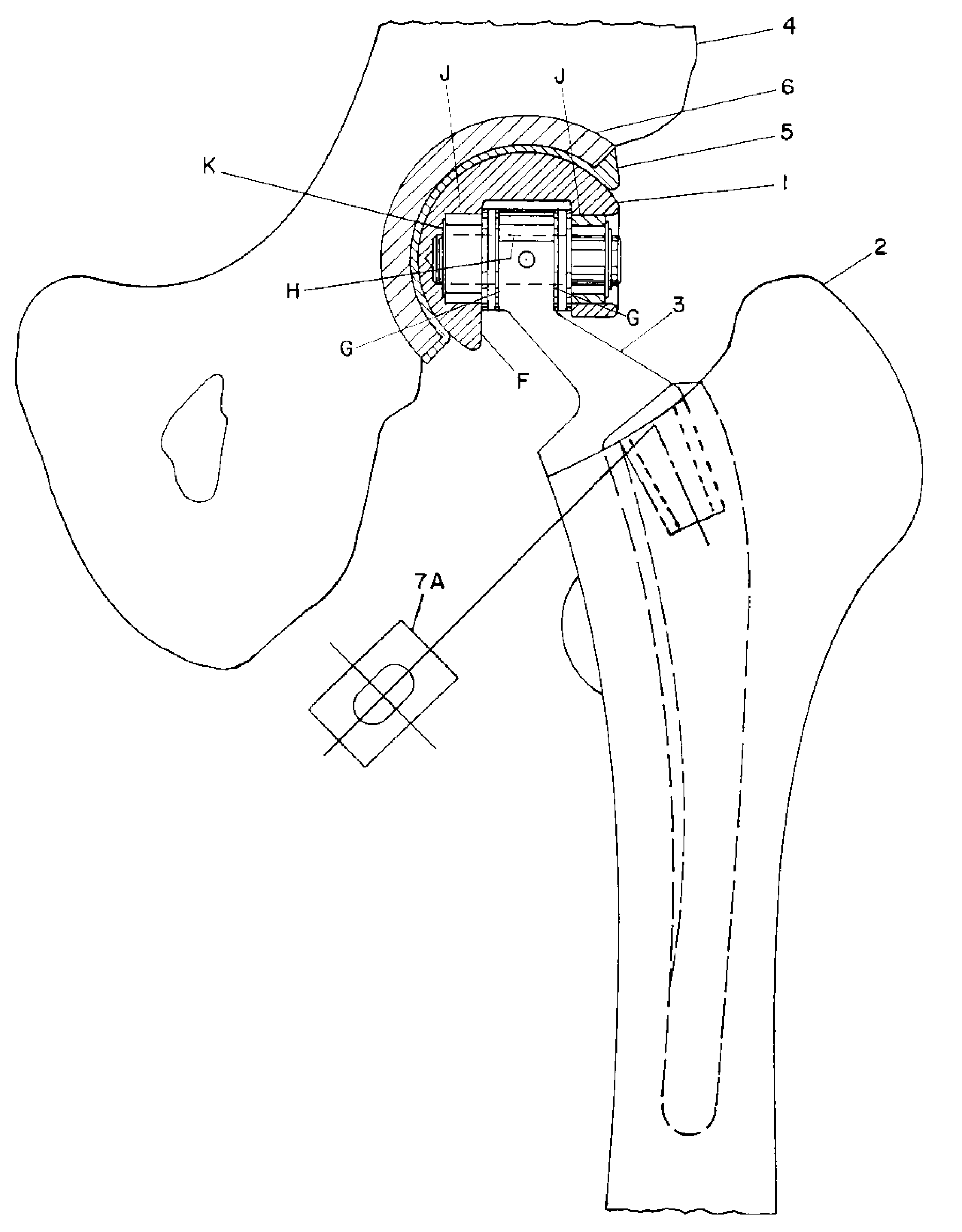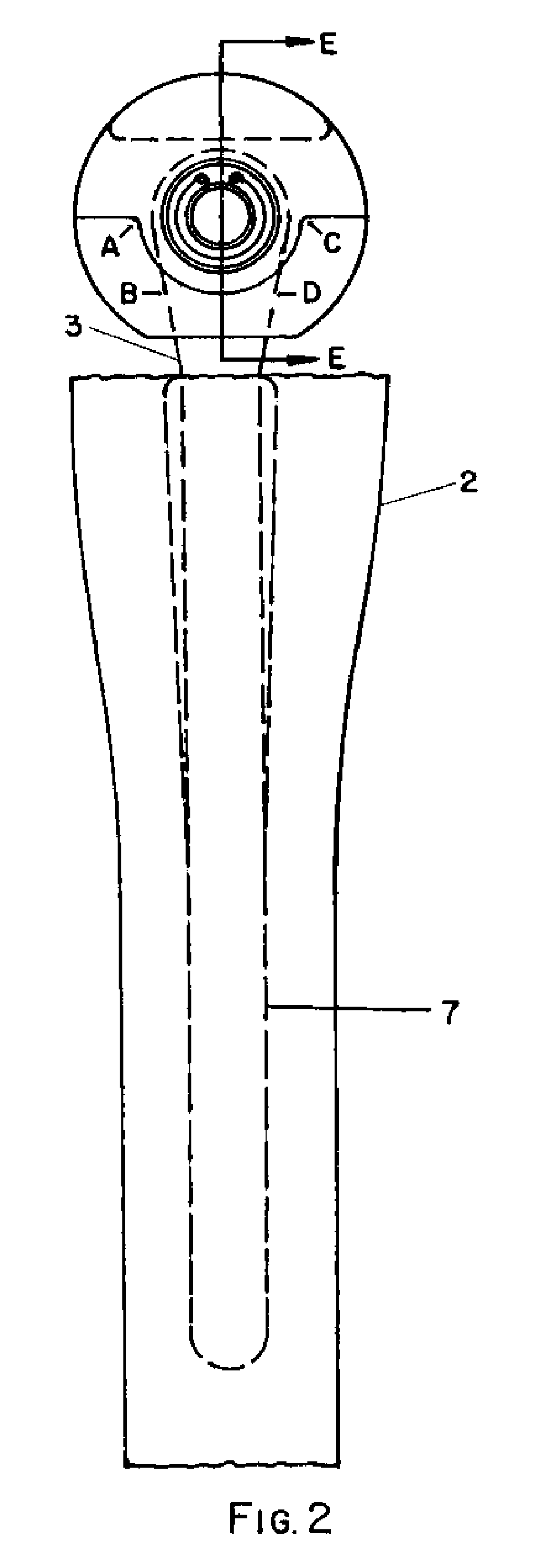Hip prosthesis and the use thereof
a technology for hips and prostheses, applied in the field of hip prostheses, can solve the problems of further deterioration of the prosthesis, and achieve the effects of reducing the motion of the ball and socket joint, and reducing the wear of the prosthesis parts
- Summary
- Abstract
- Description
- Claims
- Application Information
AI Technical Summary
Benefits of technology
Problems solved by technology
Method used
Image
Examples
embodiment i
[0017 and Embodiment II of the invention disclosed here are described below. They are similar to each other. The principle difference is that in Embodiment II of the invention disclosed here there is a modular connection between the stem for placement within the femur and the assembly that includes the secondary bearing.
[0018]FIG. 1 is a partially cross-sectional depiction of Embodiment I of the invention disclosed here. More particularly, the pelvis, the primary bearing system and the secondary bearing system are shown in cross-section. The view is an anterior view of the left hip. FIG. 1 will be used in describing the general features of Embodiment I of the invention disclosed here. In Embodiment I, the ball 1 interfaces with a socket liner 5 within an acetabulum shell prosthetic implant 6 which is secured within the pelvis 4.
[0019]FIG. 4 is a partially cross-sectional depiction of Embodiment II of the invention disclosed here. More particularly, the pelvis, the primary bearing sy...
PUM
 Login to View More
Login to View More Abstract
Description
Claims
Application Information
 Login to View More
Login to View More - R&D
- Intellectual Property
- Life Sciences
- Materials
- Tech Scout
- Unparalleled Data Quality
- Higher Quality Content
- 60% Fewer Hallucinations
Browse by: Latest US Patents, China's latest patents, Technical Efficacy Thesaurus, Application Domain, Technology Topic, Popular Technical Reports.
© 2025 PatSnap. All rights reserved.Legal|Privacy policy|Modern Slavery Act Transparency Statement|Sitemap|About US| Contact US: help@patsnap.com



